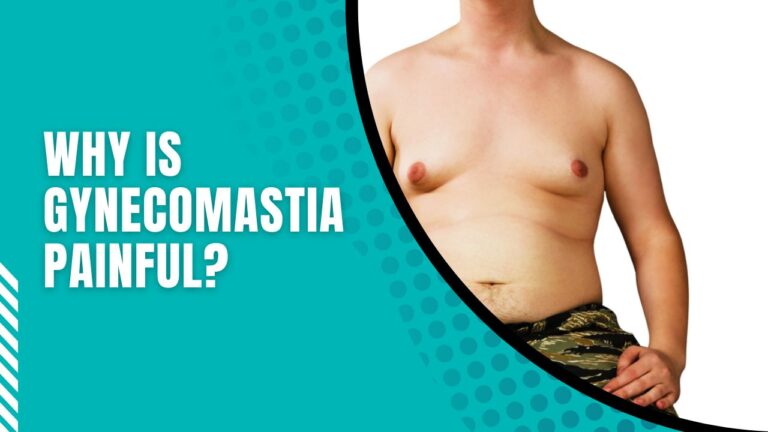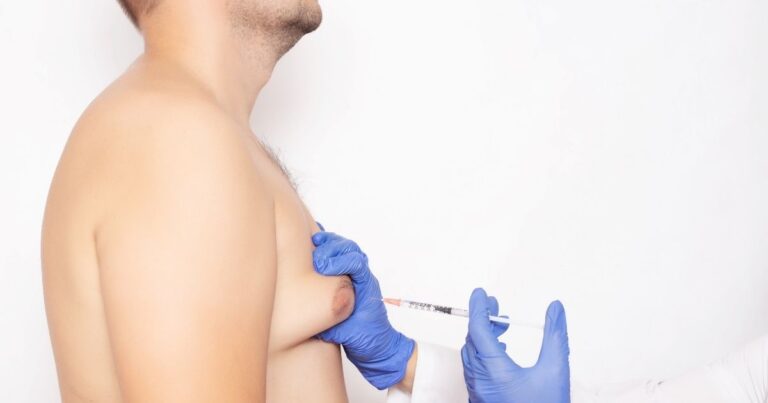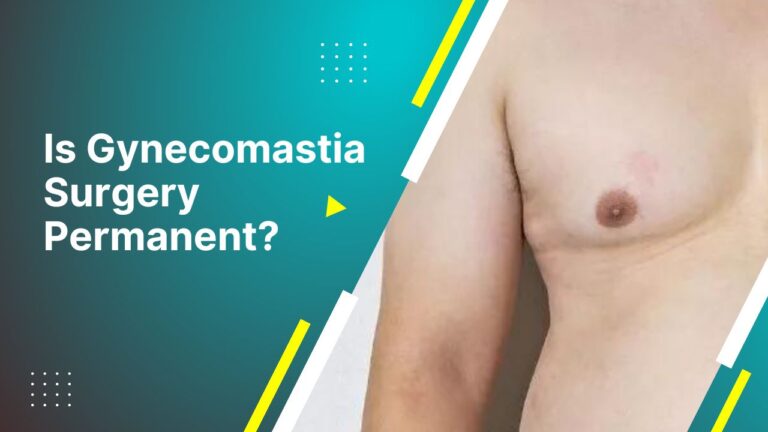Noticed enlarged breast tissue and wondering if it’ll just go away on its own? You’re not alone. Gynecomastia—a condition where male breast tissue becomes swollen due to hormone imbalance—is surprisingly common, especially during puberty or with certain health or lifestyle changes. The big question is: does gynecomastia go away naturally?
In many cases, yes—but not always. In this article, we’ll explain what causes gynecomastia, when it might resolve without treatment, and when it’s time to consider medical advice or other solutions. Let’s clear up the confusion and help you understand your next steps.
What Is Gynecomastia?
Gynecomastia is the enlargement of breast tissue in males, often resulting from hormonal imbalances. It is a common condition, affecting up to 70% of adolescent boys during puberty and a smaller percentage of adult men. While it can be a temporary issue for some, others may experience persistent symptoms.
Causes of Gynecomastia
The primary cause of gynecomastia is an imbalance between estrogen and testosterone levels. Factors such as puberty, aging, and certain medications can disrupt this balance. Additionally, conditions like hyperthyroidism or kidney failure may contribute to its development.
Book A Consultation With Dr Tarek Bayazid
Top-rated Plastic Surgeon For Gynecomastia in Dubai
Installment Plan Available
Symptoms and Diagnosis
Symptoms of gynecomastia include swollen breast tissue and tenderness. Diagnosis typically involves a physical examination, medical history review, and sometimes imaging tests to rule out other conditions. Early diagnosis can help in managing the condition effectively.
- Swollen breast tissue
- Breast tenderness
- Physical examination for diagnosis
- Medical history review
- Imaging tests if necessary
Does Gynecomastia Go Away on Its Own?
Factors Affecting Natural Resolution
Gynecomastia may resolve naturally, especially if it occurs during puberty. Factors such as age, underlying health conditions, and lifestyle choices can influence its resolution. For some, the condition may persist without intervention.
Timeframe for Spontaneous Improvement
In adolescents, gynecomastia often resolves within six months to two years. However, in adults, the timeframe can vary significantly, and spontaneous improvement is less common. Monitoring the condition over time is essential to determine the need for treatment.
Age-Related Considerations
Age plays a significant role in the resolution of gynecomastia. While younger individuals may experience natural improvement, older adults are less likely to see spontaneous changes. Hormonal changes with aging can exacerbate the condition.
- Adolescents: 6 months to 2 years for resolution
- Adults: Less common spontaneous improvement
- Age-related hormonal changes
Risk Factors for Developing Gynecomastia
Hormonal Imbalances
Hormonal imbalances, particularly an increase in estrogen or a decrease in testosterone, are primary risk factors. These imbalances can occur naturally or due to external factors like medications.
Medications and Substances
Certain medications, such as anti-androgens, anabolic steroids, and some antidepressants, can increase the risk of gynecomastia. Substance abuse, including alcohol and drugs like marijuana, can also contribute.
Health Conditions
Underlying health conditions, such as liver disease, kidney failure, or tumors, can lead to gynecomastia. Addressing these conditions is crucial in managing the symptoms.
- Anti-androgens and anabolic steroids
- Alcohol and drug abuse
- Liver and kidney diseases
Can Gynecomastia Be Treated with Weight Loss and Exercise?
Differentiating True Gynecomastia from Pseudogynecomastia
True gynecomastia involves glandular tissue enlargement, while pseudogynecomastia is due to excess fat. Identifying the type is essential for determining the appropriate treatment approach.
Impact of Lifestyle Changes
Weight loss and exercise can help reduce pseudogynecomastia by decreasing body fat. However, they may have a limited impact on true gynecomastia, which involves glandular tissue.
Limitations of Non-Surgical Approaches
While lifestyle changes can improve overall health, they may not fully resolve true gynecomastia. In such cases, medical or surgical interventions may be necessary.
- True vs. pseudogynecomastia
- Weight loss for pseudogynecomastia
- Limited impact on glandular tissue
How to Identify Gynecomastia
Self-Examination Techniques
Self-examination involves feeling for firm, rubbery tissue beneath the nipple. This can help distinguish between gynecomastia and fat deposits.
Professional Evaluation
A healthcare professional can provide a thorough evaluation, including a physical exam and medical history review, to confirm the diagnosis.
Diagnostic Tests
Diagnostic tests, such as blood tests or imaging, may be required to rule out other conditions and confirm gynecomastia.
- Self-examination for firm tissue
- Professional physical exam
- Blood tests and imaging
Prevention Strategies for Gynecomastia
Hormone Management
Managing hormone levels through lifestyle changes or medication can help prevent gynecomastia. Regular check-ups with a healthcare provider are essential.
Lifestyle Modifications
Adopting a healthy lifestyle, including a balanced diet and regular exercise, can reduce the risk of developing gynecomastia. Avoiding substances that can affect hormone levels is also crucial.
- Regular hormone level check-ups
- Balanced diet and exercise
- Avoidance of triggering substances
Treatment Options for Gynecomastia
Conservative Management Approaches
Conservative approaches include observation and lifestyle changes. These are often recommended for mild cases or during puberty.
Medical Interventions
Medications, such as selective estrogen receptor modulators (SERMs), can help reduce breast tissue in some cases. These are typically prescribed by a healthcare provider.
Surgical Solutions
Surgery may be considered for severe or persistent cases. Options include liposuction or mastectomy to remove excess tissue.
- Observation and lifestyle changes
- Medications like SERMs
- Liposuction or mastectomy
Final Thoughts
Understanding gynecomastia and its potential resolutions is essential for those affected. While some cases resolve naturally, others may require medical or surgical intervention. Consulting with healthcare professionals can provide guidance tailored to individual needs.
Frequently Asked Questions
How long does it take for gynecomastia to go away?
The timeframe for gynecomastia to resolve varies. In adolescents, it often resolves within six months to two years. In adults, spontaneous resolution is less common and may require intervention.
Can gynecomastia go away with diet and exercise?
Diet and exercise can help reduce pseudogynecomastia by decreasing body fat. However, they may have a limited impact on true gynecomastia, which involves glandular tissue.
At what age does gynecomastia go away?
Gynecomastia often resolves during adolescence, typically between six months to two years. In adults, the condition may persist and require medical evaluation for treatment options.









